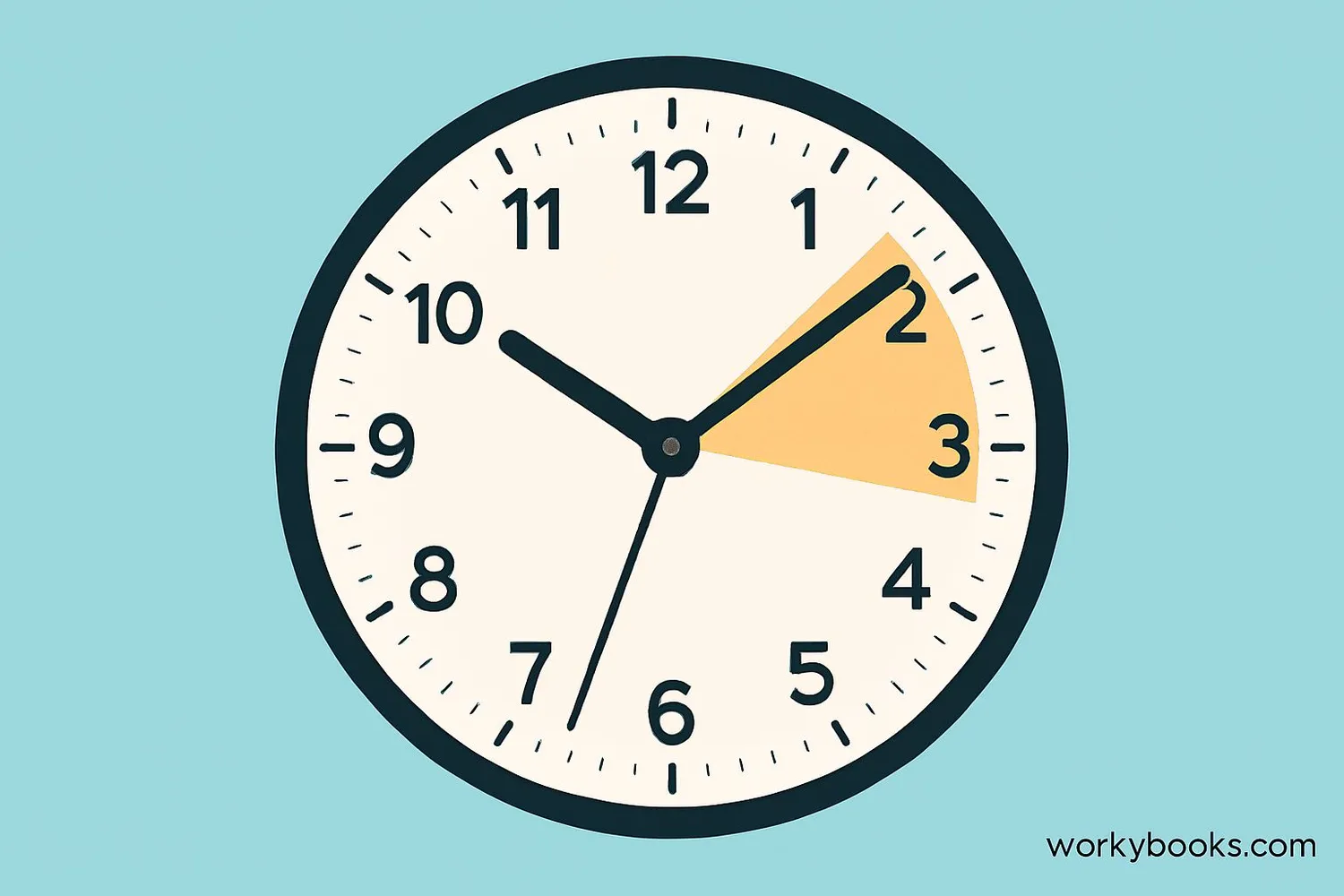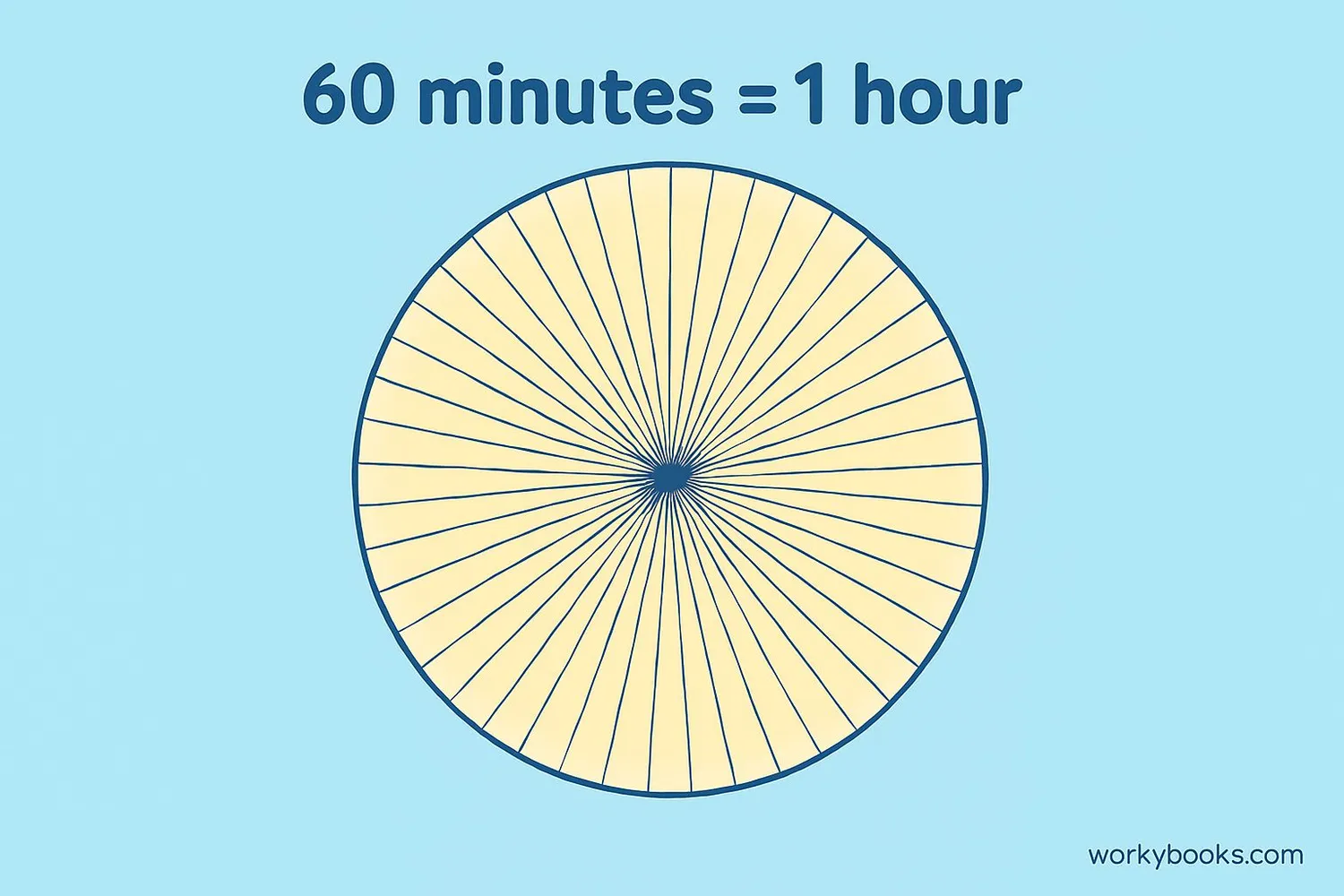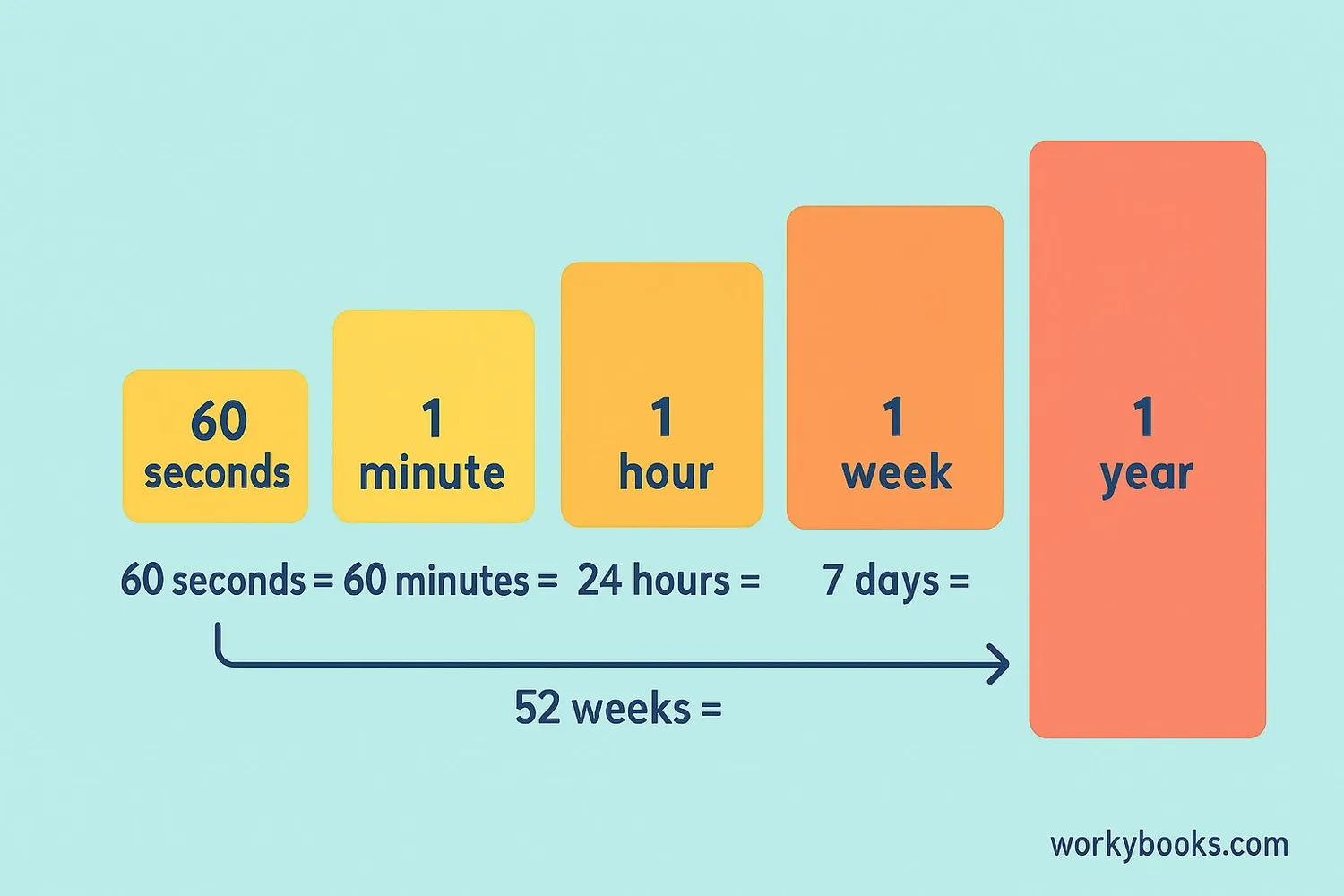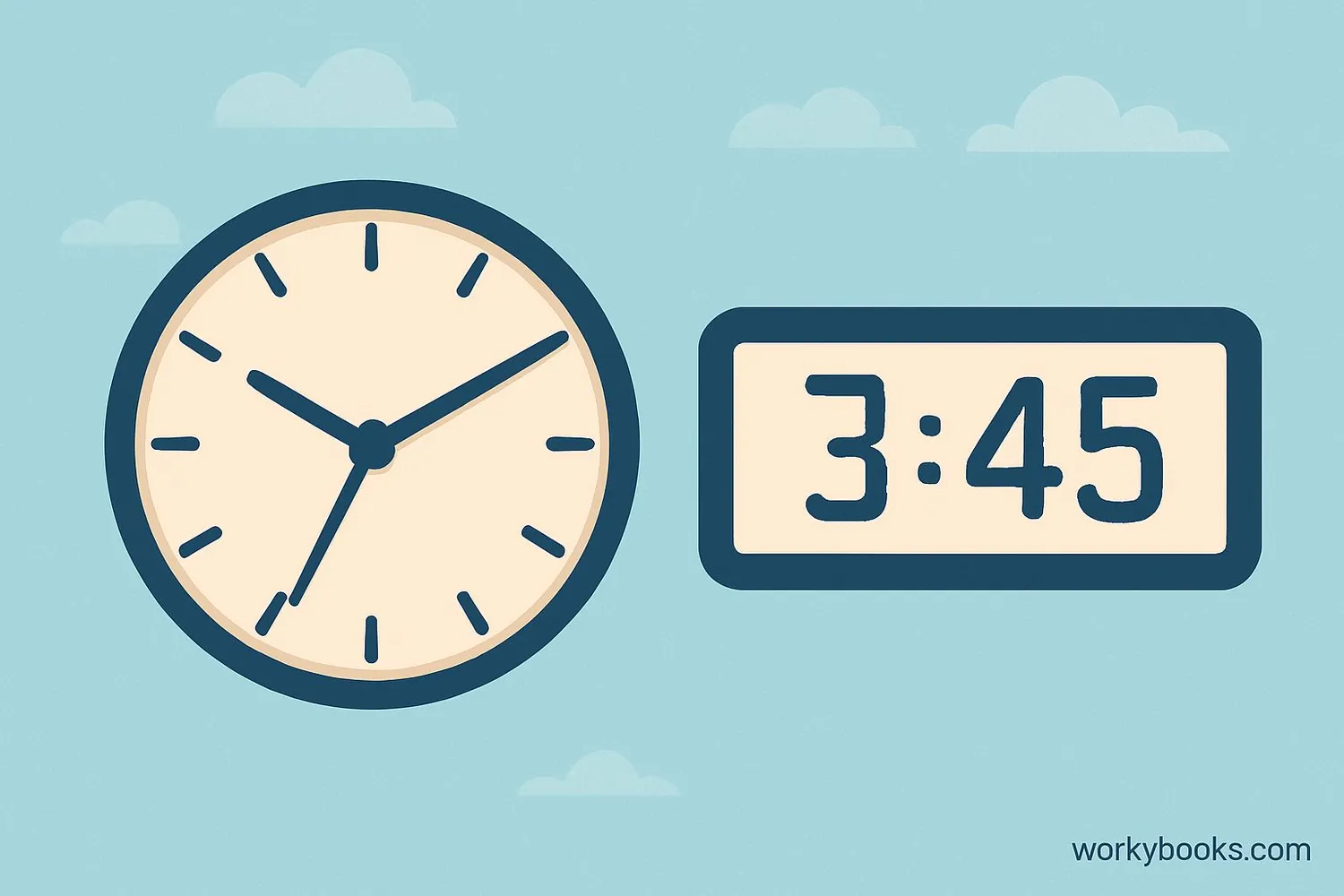What is an Hour? - Definition, Examples, Quiz, FAQ, Trivia
Learn about time measurement with hours, minutes, and how to tell time
What is an Hour?

An hour is a unit of time that helps us measure how long things take. There are 24 hours in a full day, and we divide each hour into 60 minutes.
The concept of an hour dates back thousands of years to ancient civilizations like the Egyptians, who divided the day into 12 parts of daylight and 12 parts of darkness.
We use hours to schedule our day, know when to go to school, when to eat meals, and when to go to bed. Understanding hours helps us organize our time and be on schedule.
Key Concept
An hour is a unit of time equal to 60 minutes or 3,600 seconds. There are 24 hours in one full day.
How Many Minutes in an Hour?

Every hour contains exactly 60 minutes. This is an important relationship to remember when working with time.
Time Relationship
To convert hours to minutes, multiply the number of hours by 60.
Example: How many minutes are in 3 hours?
Step 1: Start with the number of hours → 3 hours
Step 2: Multiply by 60 → 3 × 60
Step 3: Calculate the result → 180 minutes
So 3 hours equals 180 minutes. Remembering this relationship helps with time calculations!
Remember
When converting hours to minutes, your answer will be a larger number because minutes are smaller units than hours.
Units of Time

Time is measured using different units. Understanding these units helps us describe how long activities take. Here are the main units of time:
| Unit | Equals | Description |
|---|---|---|
| 1 minute | 60 seconds | Time to count to 60 |
| 1 hour | 60 minutes | Time for one class period |
| 1 day | 24 hours | From sunrise to sunrise |
| 1 week | 7 days | School week plus weekend |
| 1 month | 28-31 days | About 4 weeks |
| 1 year | 365 days | Earth's orbit around the sun |
Some specialized measurements like "keystrokes per hour" measure how many keys someone can press on a keyboard in one hour. This is used to measure typing speed. If someone types 60 words per minute (with average 5 letters per word plus spaces), that would be about 3,600 keystrokes per hour!
Time Tip
Notice how each larger unit contains multiple smaller units? This pattern helps us convert between time measurements!
Telling Time

Telling time is an important skill that helps us know when to do different activities throughout the day. We use clocks to measure hours and minutes.
There are two main types of clocks:
Analog clocks have faces with numbers and hands that point to the current time. The short hand shows the hour, and the long hand shows the minutes.
Digital clocks display numbers that show the exact time in hours and minutes, often separated by a colon (for example, 3:45).
When we tell time, we say the hour first, then the minutes. For example, if the clock shows 3:45, we say "three forty-five" meaning 3 hours and 45 minutes have passed since noon or midnight.
Telling Time Tip
The small hand tells the hour, the big hand tells the minutes. When the minute hand points to 12, it means it's exactly that hour.
Time Measurement Quiz
Test your understanding of hours and time measurement with this 5-question quiz. Choose the correct answer for each question.
Frequently Asked Questions
Here are answers to common questions about hours and time measurement:
Time Trivia
Discover interesting facts about time measurement:
Ancient Timekeeping
The ancient Egyptians were among the first to divide the day into smaller parts. They used sundials during the day and water clocks at night to track time. Their system had 12 hours of daylight and 12 hours of darkness, which meant the length of an hour varied with the seasons.
Atomic Clocks
The most accurate timekeeping devices are atomic clocks, which use the vibrations of atoms to measure time. The current standard atomic clock is so accurate it would only lose about 1 second in 100 million years!
Time Zones
Before the 19th century, each town kept its own local time based on the position of the sun. The railway system necessitated standardized time zones so train schedules could be consistent. Today, there are 24 time zones around the world, each roughly 15 degrees of longitude wide.
Fastest Typist
The world record for fastest typing speed is 216 words per minute (WPM) achieved by Stella Pajunas in 1946 on an IBM electric typewriter. At that speed, she would type approximately 10,800 keystrokes per hour!


